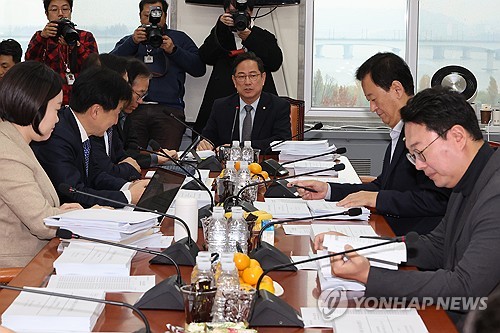
(Seoul=Yonhap Infomax) Nam Kyoung Hwang – The National Assembly’s Strategy and Finance Committee has begun in-depth discussions on introducing separate taxation for dividend income as part of South Korea’s tax reform package, with the main point of contention centering on the top tax rate. Lawmakers are converging on a plan to lower the maximum rate from the government’s proposed 35% to 25%.
However, some lawmakers continue to express dissent regarding the reduction of the top rate, indicating that further negotiations will be required before a final decision is reached.
There is growing agreement to implement the new system one year earlier than the government’s initial proposal, applying it to dividends paid out next year rather than starting with the 2027 settlement dividends.
The Strategy and Finance Committee convened its tax subcommittee on the morning of the 25th to begin formal deliberations on the separate taxation of dividend income.
Park Soo-young, a lawmaker from the People Power Party and chair of the tax subcommittee, told reporters after the session was adjourned, “There are 12 bills under consideration. The differences remain significant, but there has been sufficient discussion between the government and lawmakers. We need further talks to consolidate these into a consensus proposal.”
He added, “Both lawmakers advocating for a lower rate and the government have shown willingness to accept a reduction, but there are also lawmakers who are firmly opposed. While a perfect consensus has not been reached, it is customary for the subcommittee to decide by consensus rather than majority vote, so we will continue discussions.”
Regarding the top tax rate, Park said, “The majority view is in favor of a 25% rate, though there are about two lawmakers who oppose this. We will continue to discuss.”
Lee So-young, a lawmaker from the Democratic Party of Korea, also told reporters, “The government indicated today, as it has previously, that it is open to lowering the top rate from the 35% in its original proposal. The trend is clearly moving toward a lower rate than the government’s initial plan.”
The issue of when to implement the separate dividend taxation appears to be largely resolved.
Lee had previously stated on Facebook that the new system should be applied to settlement dividends for the fiscal year ending April 2026, one year earlier than the government’s proposal.
On this, Lee said, “I believe the timing issue has been mostly settled. The government has also shown a more forward-looking stance on several other detailed issues.”
Further discussions will be held on the eligibility criteria for separate taxation.
Lee explained, “My proposal only includes an excellence award, not an effort award, so it’s difficult to compare directly with the government’s plan. It would be good to carefully assess which approach better incentivizes higher dividends.”
She continued, “The effort award itself is meaningful. However, as I pointed out during the National Assembly audit, the provision requiring a 5% increase over the three-year average could result in a discount effect. The government acknowledged the validity of this point and will likely revise the relevant clauses.”
The government had initially proposed that companies eligible for separate dividend taxation would be those with a dividend payout ratio of 40% or higher, or at least 25% with a dividend amount that has increased by more than 5% compared to the average of the past three years.
However, critics argue that since most listed companies would meet the 25% payout and 5% increase criteria, and since simply raising dividends in line with inflation would qualify them for tax benefits, the proposal fails to provide a strong incentive for higher payouts.
Park Soo-young also noted, “The government’s plan divides the system into two categories—excellence and encouragement awards. There are opinions that these should be separated or that the criteria should be eliminated altogether. The gap is wide, but we will try to reach a compromise.”
After the morning session, Lee So-young posted on Facebook, “I’d like to share a few meaningful points. The government accepted my suggestion to move up the implementation by one year. The plan is to select eligible companies based on their 2025 fiscal year payout ratios, so dividends received from 2026 onward will be included.”
She added, “I also pointed out that the three-year sunset period is too short and could undermine the policy’s effectiveness. The government expressed some agreement and indicated it would consider extending the period.”
nkhwang@yna.co.kr
(End)
Copyright © Yonhap Infomax Unauthorized reproduction and redistribution prohibited.

